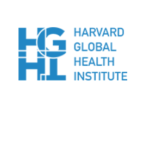
The Harvard Global Health Institute has published a state-by-state simulation that estimates the amount of coronavirus testing that will be needed by May 15. The institute started from a model of future case counts and then calculated how much testing would be needed for a state to test all infected people and any close contacts they may have exposed to the virus.
The study was conducted in partnership with National Public Radio (NPR). In an interview with NPR, institute director Ashish Jha said, “Testing is outbreak control 101, because what testing lets you do is figure out who’s infected and who’s not…that lets you separate out the infected people from the noninfected people and bring the disease under control.”
Hawaii is one of 9 states that has exceeded testing minimums estimated by Harvard. In addition to Hawaii, Alaska, Montana, North Dakota, Oregon, Tennessee, Utah, West Virginia, and Wyoming are on the list.
As of Friday, May 8, Hawaii had run 34,386 tests for COVID-19, of which 34,188 were negative and 629 positive. There were 19 inconclusive results. According to State Department of Health, Hawai‘i is averaging 797 tests each day, more than the estimated minimum tests recommended by May 15. In the positive test ratio category, only 0.3% percent of tests in Hawai‘i have come back positive; much lower than the World Health Organization recommended rate of 10 percent or lower. Only Montana has a better positive test ratio of 0.1%.
Click here for the Harvard Global Health Institute information.